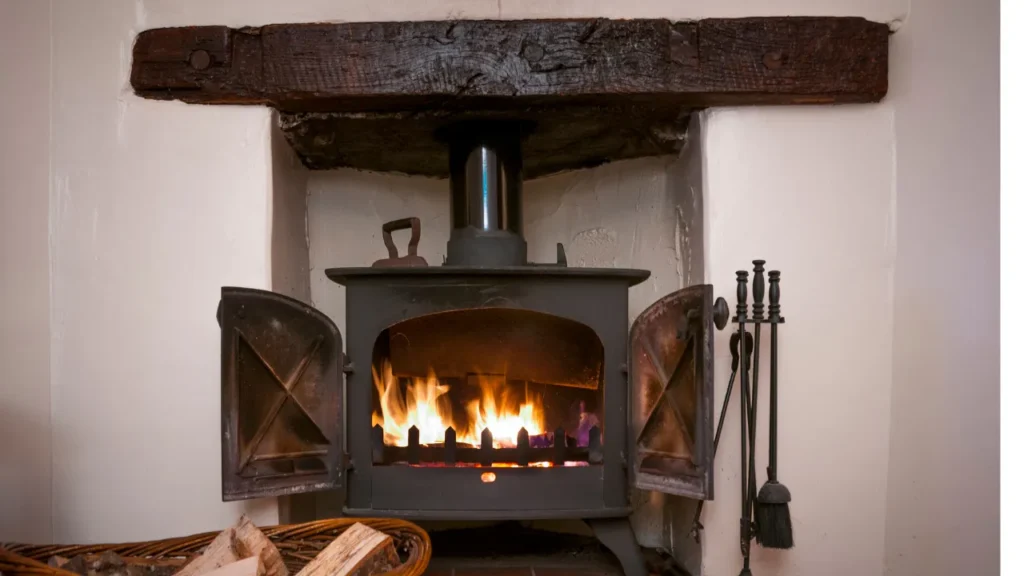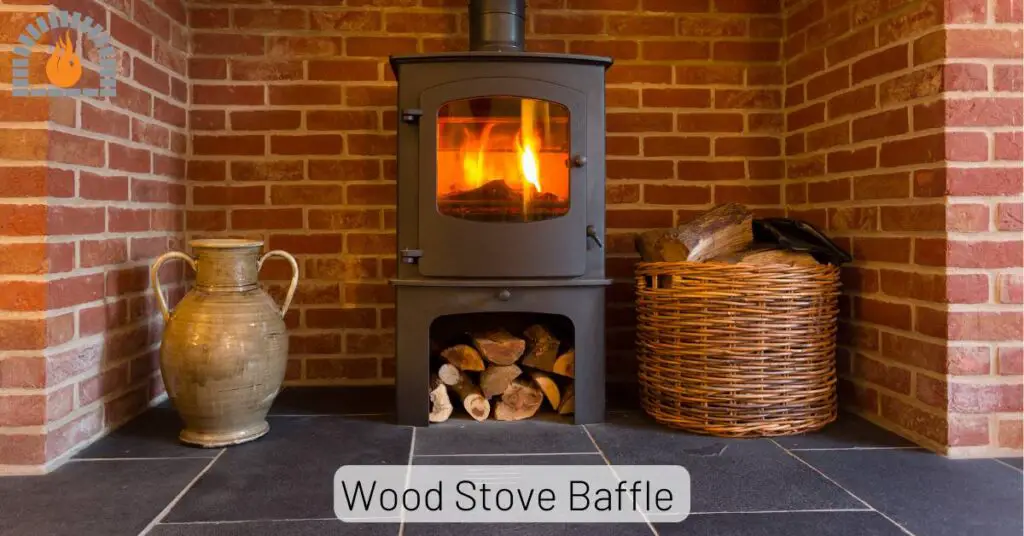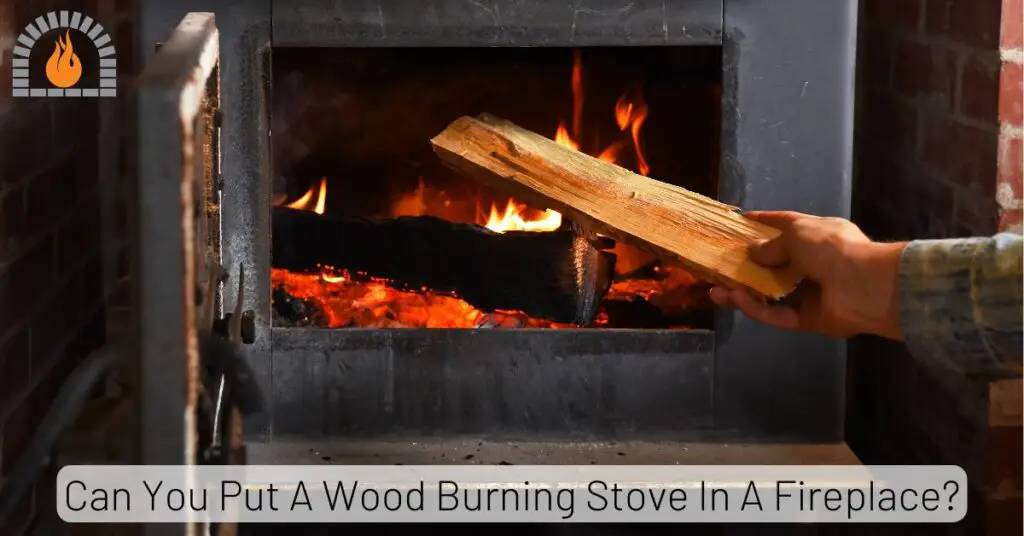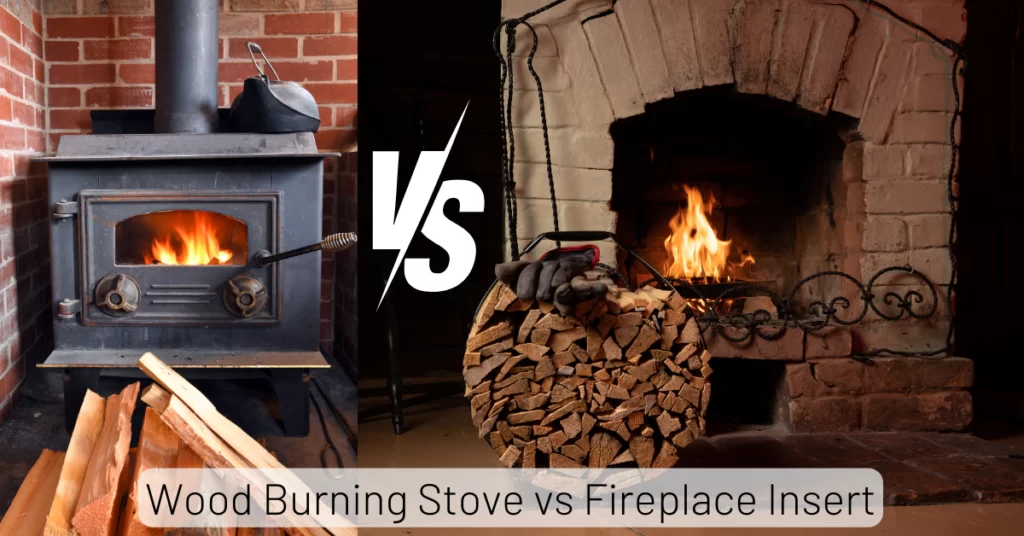Wood-burning stoves are a charming and efficient way to heat your home, offering a cozy ambiance while reducing energy costs. However, like any heating appliance, they can sometimes present a range of challenges.
From struggling to start a fire to dealing with excessive smoke or dangerous creosote buildup, understanding these problems and their solutions is crucial for the safe and effective use of a wood stove.
In this guide, we’ll take a deep dive into the most common wood-burning stove problems and provide practical solutions to keep your stove running smoothly.
Wood Burning Stove Problems and Solutions
Wood stoves, while highly efficient, can present a series of challenges. Most of these problems stem from improper use, lack of maintenance, or subpar installation.
Let’s explore the most common issues users face and how to address them effectively.
Problem #1: Poor Draft or Smoke Entering the Room
One of the most common complaints from wood stove users is smoke spilling into the room instead of exiting through the chimney. This issue, known as a poor draft, can be both frustrating and hazardous.
Causes of Poor Draft
- Creosote buildup, bird nests, or other obstructions can block the chimney, preventing smoke from escaping.
- A chimney that is too short may not create enough suction to pull smoke out.
- If the room lacks proper airflow, it can prevent the chimney from drawing air properly, resulting in smoke backdraft.
Solutions for Poor Draft
- Regularly clean the chimney to prevent blockages and creosote buildup. Annual cleaning is recommended.
- Increasing the height of your chimney can significantly improve the draft.
- Open windows or install a vent to increase airflow to the stove.
Problem #2: Difficulty Starting the Fire
Getting a fire started in a wood stove can be frustrating, especially when it doesn’t catch quickly or keeps dying out.
Common Causes
- Unseasoned or wet wood is hard to ignite and will produce more smoke than heat.
- Fire needs oxygen to burn, and without proper air circulation, the fire will struggle to stay lit.
Solutions
- Ensure your firewood has been seasoned for at least 6 months. Well-dried hardwoods like oak and maple are ideal.
- Stack your firewood loosely inside the stove to allow air to flow through and feed the flames.
- Use small, dry twigs and tinder such as paper or dry leaves to get the fire started.
Problem #3: Excessive Creosote Build-Up
Creosote is a flammable substance that forms when wood doesn’t burn completely. It can build up inside the chimney, creating a serious fire hazard.
Causes of Creosote Accumulation
- Wet wood burns at a lower temperature, leading to incomplete combustion and creosote formation.
- Fires that are too cool don’t burn off the gases, which turn into creosote.
- A dirty chimney encourages creosote buildup.
How to Prevent Creosote Build-Up
- Always use dry, seasoned wood to reduce creosote.
- When safe, burn fires at a higher temperature to ensure complete combustion.
- Have your chimney inspected annually to catch any buildup before it becomes a problem.
Problem #4: Stove Overheating
An overheated stove can warp the metal, damage the stove, and even become a fire hazard.
Causes of Overheating
- Too much wood in the stove can cause temperatures to spike.
- If too much air is allowed in, the fire can burn hotter than intended.
Solutions for Overheating
- Stick to the manufacturer’s guidelines for how much wood to burn at one time.
- Monitor the stove’s temperature to ensure it doesn’t exceed safe levels.
- Adjust the air intake controls to moderate the fire’s intensity.
Problem #5: Glass Door Becoming Dirty
Dirty glass doors can obstruct your view of the fire and reduce the stove’s aesthetic appeal.
Causes of Dirty Glass
- Cooler fires don’t burn wood completely, leaving behind soot on the glass.
- Burning unseasoned wood leads to excess soot and creosote.
- Insufficient airflow in the stove can cause smoke to stick to the glass.
Solutions for Keeping the Glass Clean
- Keep your fire burning at an optimal temperature to avoid excess soot.
- Make sure your wood is properly seasoned to minimize soot.
- Clean the glass frequently using a specialized stove glass cleaner or a homemade solution of vinegar and water.
Problem #6: Back-Puffing Issues
Back-puffing occurs when smoke bursts out of the stove door instead of being drawn up the chimney, causing unpleasant odors and poor indoor air quality.
Causes of Back-Puffing
- A poor draft can cause smoke to back up into the stove.
- Blockages in the chimney or stove can lead to back-puffing.
Solutions to Back-Puffing
- Regular cleaning helps prevent back-puffing.
- Increase the height of the chimney or add a draft inducer to improve airflow.
- Small changes to the stove’s air intake can often resolve back-puffing.

Problem #7: Stove Leaking Smoke
If smoke leaks from the stove rather than going up the chimney, it can cause unpleasant smells and health hazards.
Causes of Smoke Leaks
- Over time, seals around the door or stove pipe can wear out.
- If the stove or chimney is improperly installed, it may not be airtight.
Solutions for Smoke Leaks
- Inspect and replace worn-out seals to ensure the stove is airtight.
- Have a professional inspect the installation to ensure everything is secure and sealed.
Problem #8: Inefficient Burning and Low Heat Output
If your stove isn’t producing enough heat, it may be burning inefficiently.
Causes of Inefficient Burning
- Burning wet or unseasoned wood will produce more smoke and less heat.
- Without enough air, the fire won’t burn as hot as it should.
Solutions for Improving Efficiency
- Hardwoods like oak or hickory burn hotter and longer than softwoods.
- Regular cleaning ensures good airflow and optimal combustion.
Problem #9: Chimney Fire Hazards
Chimney fires are one of the most dangerous risks associated with wood stoves.
Causes of Chimney Fires
- Excess creosote can catch fire and spread up the chimney.
- Failing to maintain the stove and chimney increases the risk of a fire.
Preventing Chimney Fires
- Have your chimney inspected annually by a professional.
- Burn Seasoned Wood at Higher Temperatures, reduces creosote buildup and lowers the risk of a chimney fire.
Problem #10: Rust and Corrosion on the Stove
Over time, rust can develop on the stove, shortening its lifespan.
Causes of Rust and Corrosion
- Leaving wood stoves exposed to damp environments can cause rust.
- Regularly neglecting to clean and treat the stove can lead to corrosion.
Solutions for Rust Prevention
- After use, clean your stove and ensure it’s dry to prevent rust.
- To protect the stove from moisture, apply heat-resistant paint periodically.
Problem #11: Air Leaks Around the Stove Door
Air leaks can result in poor stove performance, as the fire may burn too quickly or inefficiently.
Causes of Air Leaks
- Over time, the gasket that seals the door can wear down and create gaps.
- Warping from overheating can cause gaps where air can leak through.
Solutions for Air Leaks
- Replace Gaskets: Regularly inspect and replace worn gaskets to ensure a tight seal.
- Repair or Replace Damaged Doors: If the door is warped, it may need to be fixed or replaced.
FAQs
What type of wood is best for wood-burning stoves?
Seasoned hardwoods like oak, maple, and hickory are best for wood-burning stoves due to their high heat output and long burn time.
How often should I clean the chimney?
You should clean your chimney at least once a year, or more often if you use your wood stove frequently.
Can I use my wood stove if the glass is dirty?
While you can still use it, dirty glass can reduce the stove’s efficiency and safety. It’s best to clean the glass regularly.
What temperature should my stove operate at?
The ideal operating temperature is between 300°F and 600°F. Use a stove thermometer to monitor this.
How do I prevent creosote buildup?
Burn seasoned wood, keep your fire hot, and schedule regular chimney cleanings to prevent creosote buildup.
My Final Thoughts
Owning a wood-burning stove offers warmth, comfort, and energy efficiency, but it also comes with its fair share of challenges. From poor drafts to excessive creosote buildup, the key to enjoying your stove safely and efficiently lies in regular maintenance and addressing problems as they arise.
By understanding the most common issues and their solutions, you can keep your wood stove burning bright for years to come.
Affiliate Disclosure: Fireplaceadviser.com is a participant in the Amazon Services LLC Associates Program. We may earn a commission when you click on certain links on this site and purchase.

Hello!! I am Jamal Khan. I often fix my home electric heaters and gas stove problems and research the common issues in the heating units to improve my knowledge and expertise. The aim of establishing fireplaceadviser.com is to share my expertise and knowledge with my audience.
















